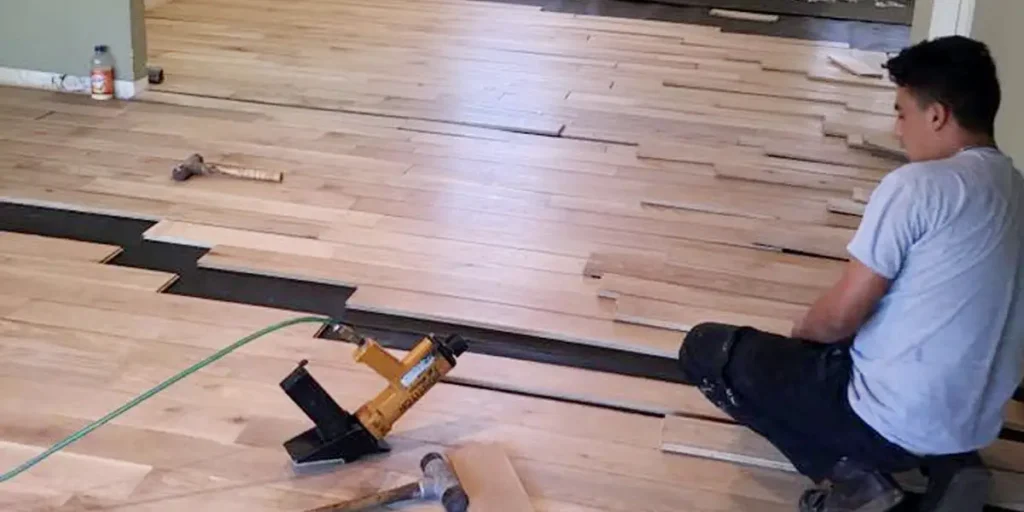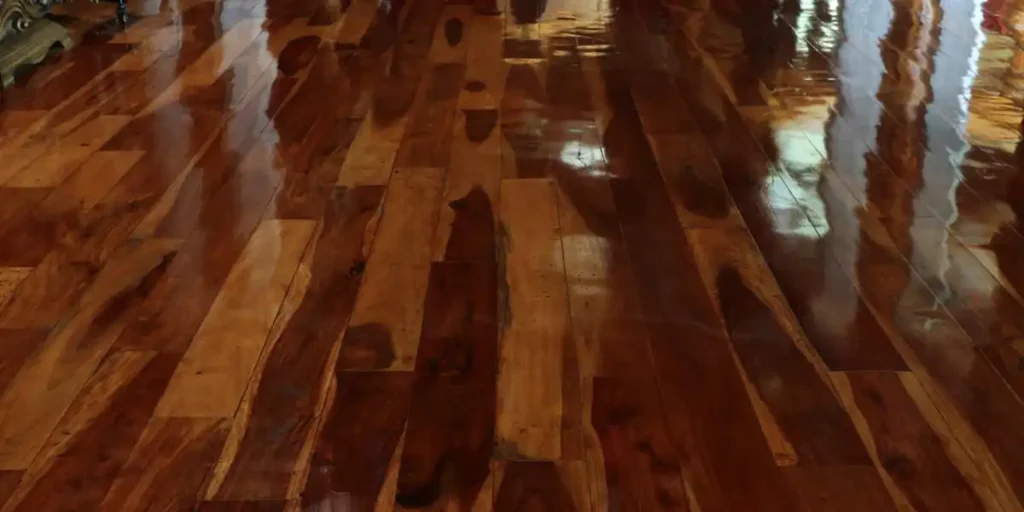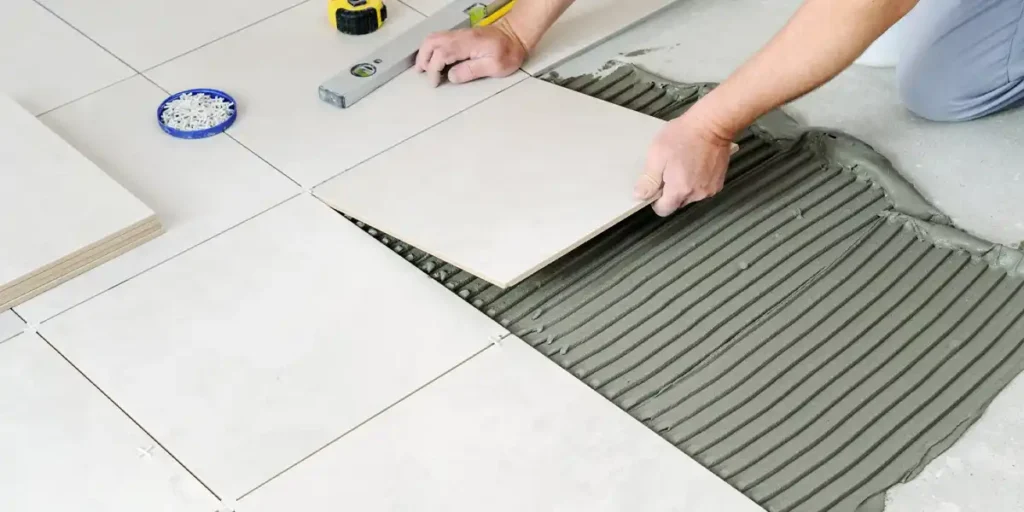Picture this: you’re walking through your home, and that unsightly scratch or unexpected dent in your laminate flooring catches your eye.
Frustrating, right? Instead of jumping straight to costly replacements, consider repairing the damage yourself. With the right tools, techniques, and a bit of patience, restoring your laminate floors can be simpler and cheaper than you think.
This guide will take you step-by-step through the process of fixing laminate flooring, ensuring professional-level results. Let’s transform those blemishes into a seamless finish!
Assessing the Damage: A Laminate Flooring Repair Checklist
Before diving into repairs, it’s essential to determine the extent of the damage. Each type of damage requires a different approach, so start by categorizing the issue:
1. Minor Scratches and Scuffs
For surface-level imperfections, repair kits with wax sticks or touch-up markers are ideal. These tools are designed to blend seamlessly with your floor’s color, covering up blemishes effectively. Always test a small, inconspicuous area first to ensure color accuracy.
2. Moderate Damage: Dents and Chips
Deeper dents or chips call for precision. A wood filler, matched to your laminate’s color, can fill gaps and dents. For minor dents, a steaming method using a warm iron and damp cloth may restore the material. Once dried, gently sand the repaired area for a smooth finish.
3. Major Damage: Cracks and Breaks
Cracked or broken planks often require replacement. This process involves removing the damaged plank, carefully inserting a new one, and ensuring it aligns with the rest of the flooring. Though more time-intensive, replacing planks is a durable solution for severe damage.
The Tools of the Trade: Gearing Up for Repairs
Having the right tools is crucial for achieving professional results. Here’s what you’ll need:
- Repair Kit: Includes wax sticks, markers, or color-matched fillers.
- Utility Knife: For precise cutting and plank removal.
- Fine-Grit Sandpaper: Smooths out filled areas.
- Putty Knife: For applying filler and leveling repairs.
- Replacement Planks: Ensure they match the current flooring style and color.
- Damp Cloth and Iron: Useful for steaming dents back into shape.
- Hammer and Tapping Block: For securing planks during replacement.
Step-by-Step Guide: How to Repair Laminate Flooring
Mastering laminate flooring repair is all about technique and patience. Follow these steps for a seamless result:
1. Prepare the Area
Start by cleaning the damaged area. Remove all dirt, dust, and debris to ensure a clean surface for repair.
2. Minor Repairs: Wax Sticks and Markers
For surface scratches, apply the wax or marker directly onto the affected area. Smooth the repair using a cloth or your finger. Let it dry completely for a polished look.
3. Moderate Repairs: Using Wood Filler
For deeper dents or chips, apply a color-matched wood filler with a putty knife. Spread the filler evenly and remove excess material. Once dry, sand the area lightly for a smooth finish.
4. Major Repairs: Replacing Planks
To replace a damaged plank:
- Carefully cut out the damaged section with a utility knife.
- Fit the replacement plank into place, ensuring it locks securely with surrounding planks.
- Use a hammer and tapping block to achieve a snug fit.
5. Final Touches
After repairs, clean the area thoroughly. Buff repaired sections gently to blend them seamlessly with the rest of the floor.
Maintaining Your Laminate Flooring: Prevention is Key
To keep your floors looking pristine and minimize future repairs:
- Use rugs or mats in high-traffic areas.
- Place felt pads under furniture legs to prevent scratches.
- Clean spills immediately to avoid water damage.
- Use laminate-safe cleaning solutions for routine maintenance.
Wrapping Up
Repairing laminate flooring doesn’t have to be daunting or expensive. With the right tools, techniques, and a bit of patience, you can restore your floors to their original beauty. From small scratches to replacing entire planks, this guide equips you with the knowledge to tackle any challenge. So roll up your sleeves and give your laminate floors the care they deserve you’ve got this!
Transform your damaged floors with Cardenas Flooring! Whether it’s scratches, dents, or plank replacements, our expert repair services ensure your laminate flooring looks brand new. Don’t wait, contact us today for professional solutions and exceptional results!
FAQs
Can I repair deep scratches on laminate flooring myself?
Yes, deep scratches can often be repaired using a laminate repair kit that includes a color-matched wood filler or wax. Apply the filler carefully to the scratch, smoothing it with a putty knife. Allow it to dry completely before sanding lightly to achieve a seamless finish. If the scratch is too large or affects the structural integrity of the plank, consider replacing the damaged plank entirely for the best results.
How can I tell if I need to replace a damaged laminate plank?
Replace a laminate plank if the damage is extensive, such as deep cracks, large chips, or water swelling, which cannot be fixed with repair kits. Replacement is also necessary if the damaged area affects the surrounding planks’ fit or stability. If minor scratches or scuffs are the issue, these can usually be fixed with wax or touch-up markers instead of replacing the plank.
What is the best way to match repair materials to my laminate flooring?
Bring a sample of your flooring or a damaged plank to a hardware store to find a repair kit, filler, or replacement plank that closely matches the color and texture. Many repair kits come with multiple shades to blend colors for a near-perfect match. Testing the material in an inconspicuous area is always a good idea before applying it to visible damage.
Can I replace one laminate plank without removing the entire floor?
Yes, replacing one plank is possible but requires precision. Carefully cut out the damaged plank using a utility knife, ensuring not to damage adjacent planks. Insert the replacement plank by locking it into place and securing it with a tapping block if necessary. For best results, consult the manufacturer’s instructions or seek professional help if the damage is extensive.
How can I prevent damage to laminate flooring in the future?
Prevent damage by placing felt pads under furniture legs, using rugs in high-traffic areas, and cleaning spills immediately to avoid water damage. Avoid dragging heavy furniture and use laminate-safe cleaning products. Regular maintenance, such as sweeping and gentle mopping, can help keep your laminate flooring in excellent condition and reduce the need for frequent repairs.




